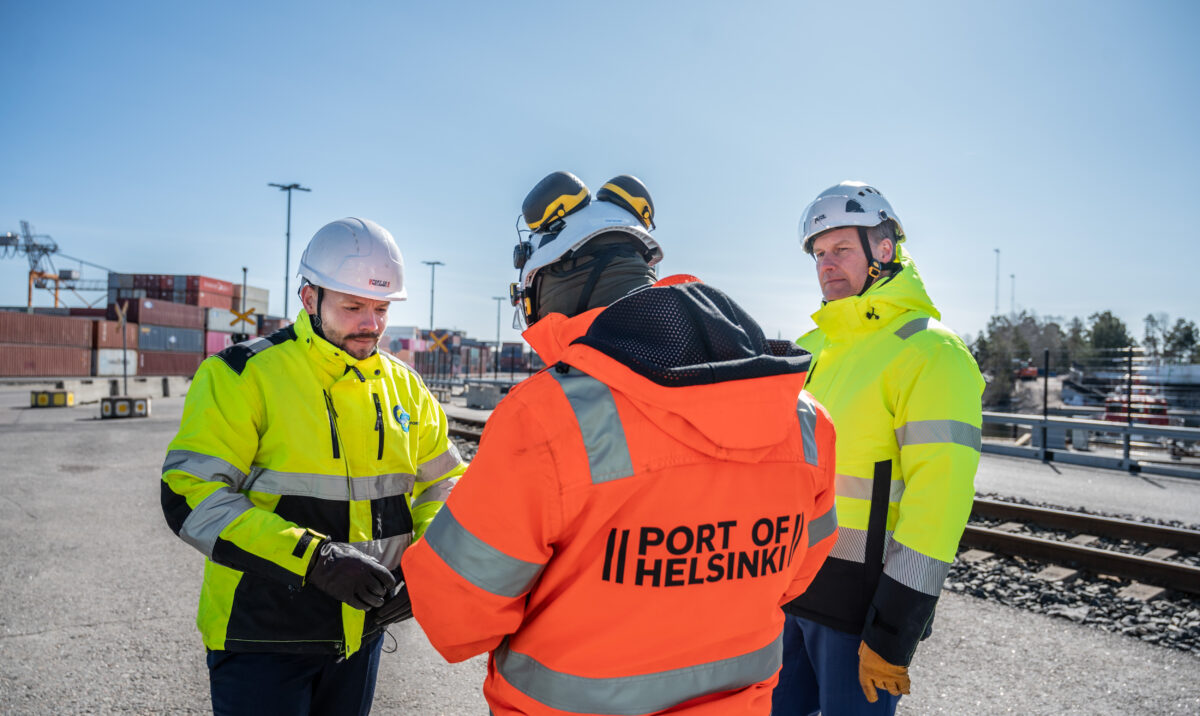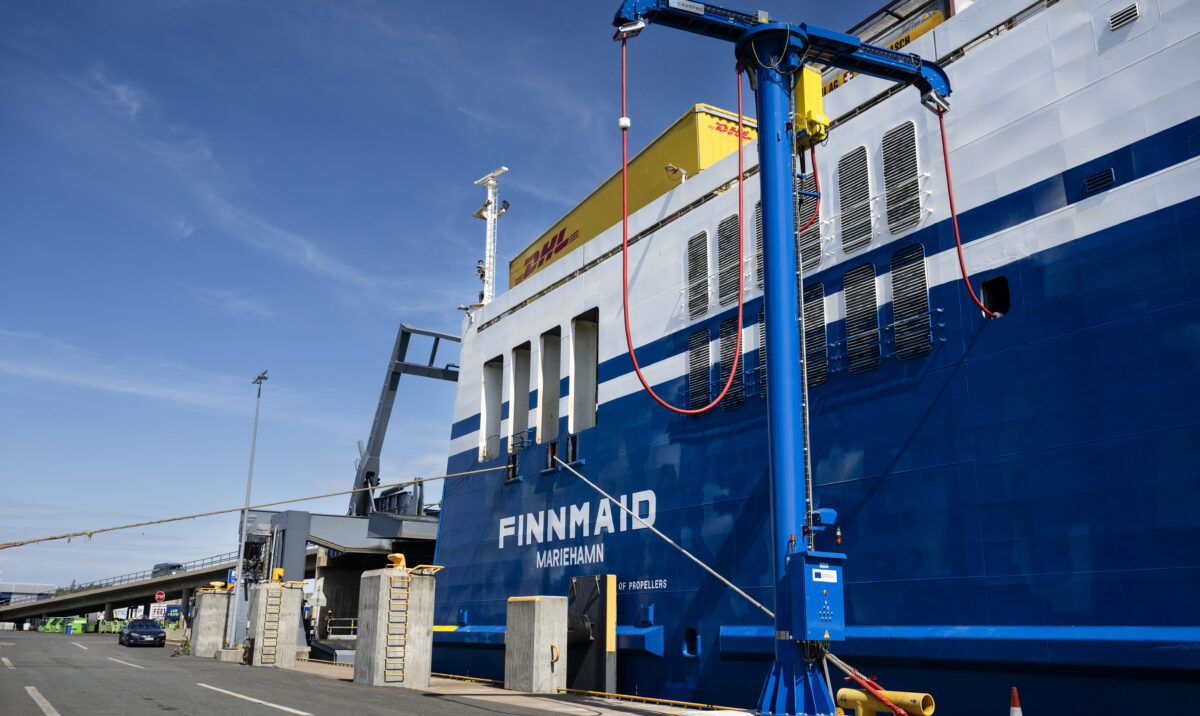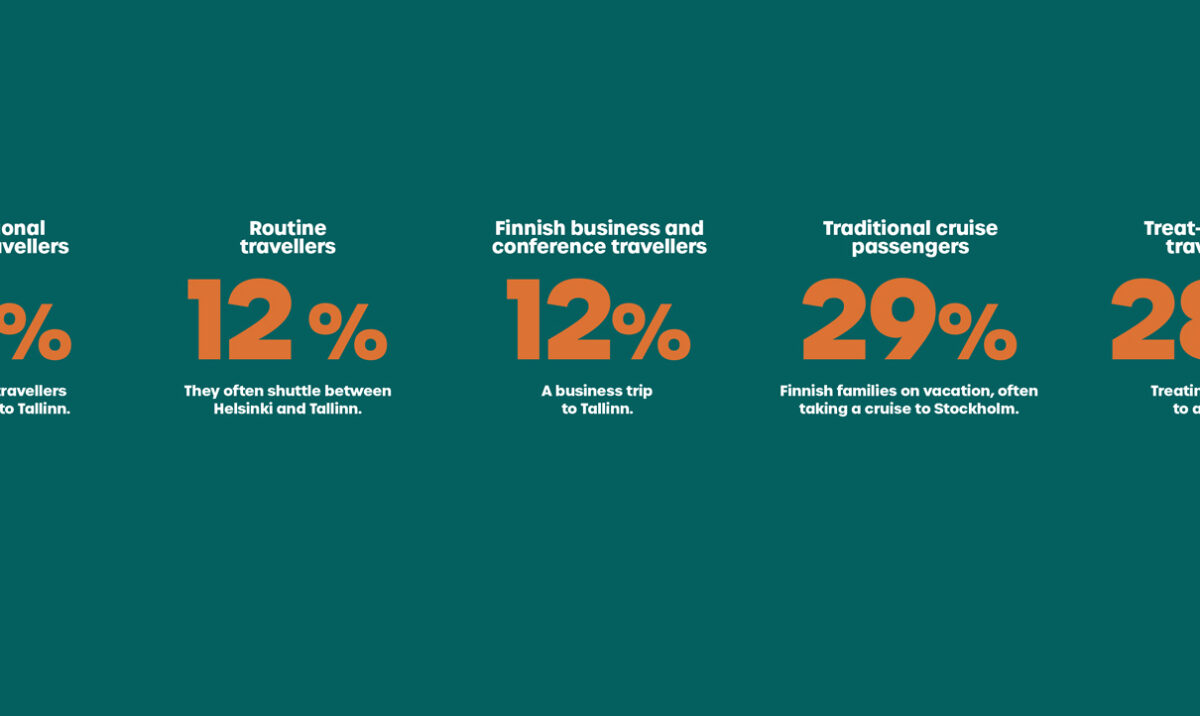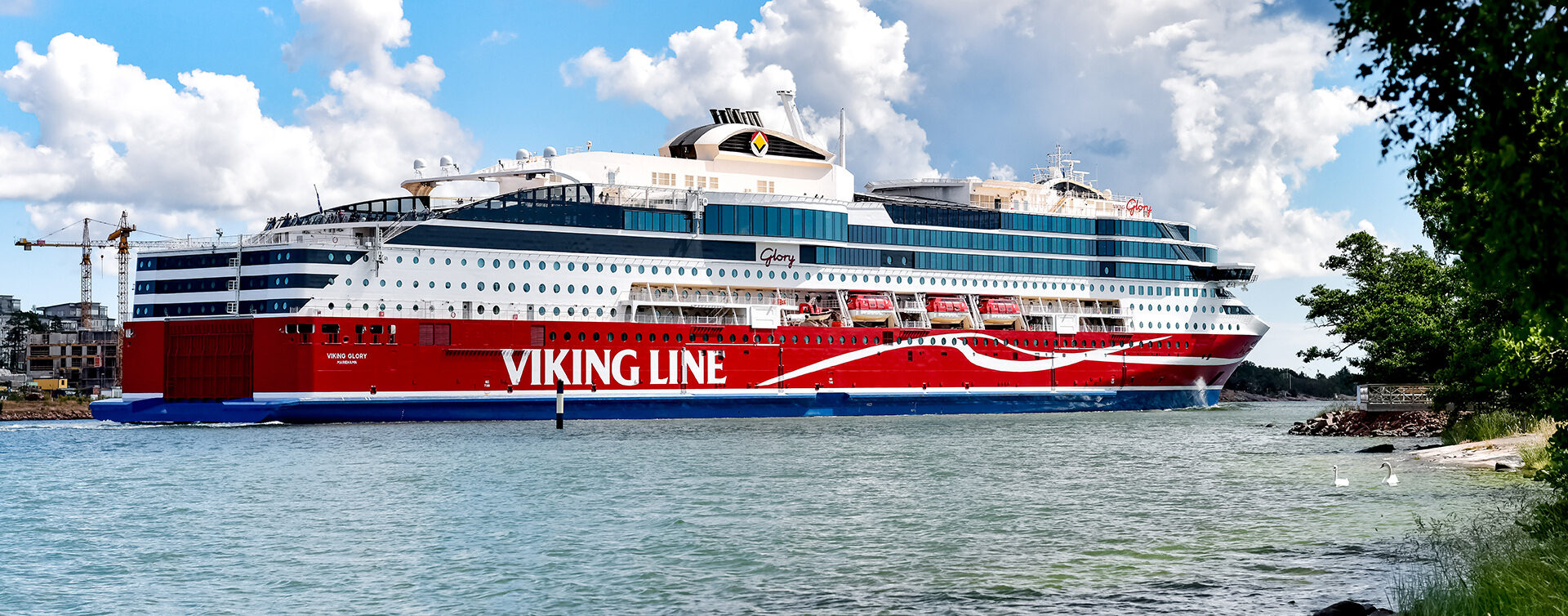
Passenger behaviour has changed
Cruise travel is well on its way to recovering from the pandemic. New vessels are boosting the sector, but last-minute bookings are making forecasting difficult.
The number of passengers passing through Helsinki harbours collapsed as a result of the pandemic, but is now picking up again.
“We’re expecting a busy summer for tourism, and believe that overall passenger numbers will rise,” says Kaj Takolander, Vice President, Passenger Services at the Port of Helsinki.
“Liner companies are now operating fewer ships from Helsinki than before the pandemic, which is slowing down recovery in terms of passenger numbers. However, I think we’ll have more or less reached pre-pandemic levels by 2025.”
Takolander says that while Russia’s war of aggression has not really had much impact on liner companies, it has reduced the number of visits made by international cruise ships. There were 164 visits last year, yet only 90 are expected this year. Passenger numbers will not decrease by the same proportion, as ships are expected to be fuller.
And the increased cost of living may even have a positive impact on cruise lines.
“Local tourism and cruises have proven to be good ‘recession products’ in the past, and I’m sure they will be again. Long-distance travel is more likely to fall by the wayside when purchasing power decreases,” says Takolander.
He notes that it is still important for cruise lines to offer attractive destinations and good onboard experiences.
“In the long term, it will also be necessary to renew the fleet used on Stockholm routes.”
Forecasting more difficult
A change in passenger behaviour has been noticed by all shipping companies operating on Helsinki–Tallinn and Helsinki–Stockholm routes, and this has brought its own challenges to estimating future trends.
“The summer holiday season is our high season, which means that ships are usually very full. However, people are now booking their trips at the very last minute, so we can currently do no more than predict another good summer,” says Janeka Rauva, COO and Deputy CEO of Tallink Silja.
“Although we haven’t reached pre-pandemic levels yet, half of our ships have been rented out as accommodation across Europe.
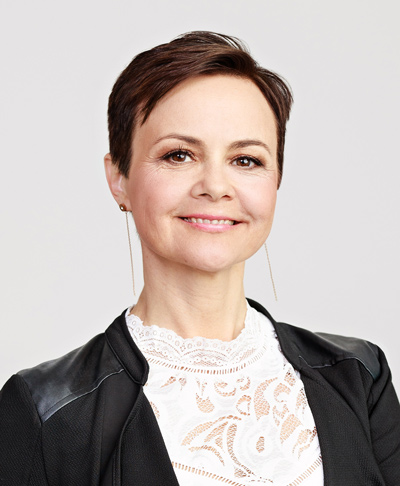
The cruise ship Silja Europa is currently missing from Tallink Silja’s Helsinki–Tallinn route and Galaxy from its Turku–Stockholm route. However, both of the company’s ships are currently running on its Helsinki–Stockholm route, which Rauva says has largely returned to pre-pandemic levels.
In April, Tallink announced that it would lease Star to the Irish Continental Group on a 20-month contract. The contract includes a 2+2-year extension and purchase option.
Tallink had been looking for new alternatives for Star, which operated on the Helsinki–Tallinn route from 2007 until December 2022, when it was replaced by MyStar.
Rauva says that new ships always provide a boost for the entire sector.
“MyStar has been very well received and there have been plenty of passengers,” she says.
In the 1970s and 1980s, shipping companies were still renewing their fleets fairly rapidly, and passenger ships had much shorter lifecycles. These days, ships are serviced and modernised to extend their service lives. For example, Silja Serenade and Silja Symphony were built in the early 1990s, but hopefully still have a good ten years ahead of them. The new vessel MyStar is expected to remain in service for 40, or even 50, years.
Pandemic routes not to be discontinued
In 2019, six per cent of Tallink’s passengers were Asian, but this figure had fallen to one per cent by 2021. Russians accounted for about three per cent in 2019, but are now very few in number. However, Rauva says that Asian groups have now started to return, and especially Koreans, Japanese and Singaporeans.
“We can’t really say what will affect what. The coronavirus, the global geopolitical situation, people’s desire to travel in general, increased living costs and so on will definitely have an impact on passenger numbers,” says Rauva.
When the pandemic hit, shipping companies had to come up with alternative offerings. It was then that Finnish tourists discovered the Åland Islands, which remain popular. Tallink’s pandemic-era success was its Helsinki–Riga route with Silja Serenade.
“We don’t currently have any plans to continue this route. Silja Symphony’s internal routes in Sweden were also popular. The popularity of both routes was naturally based on new destinations and, above all, the fact that you couldn’t really go anywhere else,” says Rauva.
During the pandemic, Viking Line and Eckerö Line also ran cruises to places such as the Åland Islands, Hanko and Kotka instead of Tallinn and Stockholm. These destinations will be discontinued this summer, as shipping companies are now focusing on familiar routes.
Glory and Visby are Viking Line’s hits
Viking Line currently has only one vessel sailing between Helsinki and Stockholm. Glory started sailing between Turku and Stockholm just over a year ago, and is much larger than its predecessor.
“As a whole, we’re fast approaching 2019 traffic and booking volumes, and have even exceeded them on some routes in certain weeks. However, we won’t be able to reach the same passenger numbers on the Helsinki–Stockholm route unless we have two ships,” says Minna Tuorila, who started as Viking’s Commercial Director in February.
During the high season, Viking Line will add a second ship – the refurbished Cinderella – on its Helsinki–Stockholm route.
This summer’s big hits are Åland and its archipelago, and Visby. Viking Line will be running four cruises there, and there are only a handful of tickets left.
“The demand surprised even us. The cruises were pretty much sold out in January,” says Tuorila.

No Asians or Russians
Viking Line has also noticed that trips are being booked much later than before, and often at the last minute.
“Bookings are even being made on the same day. At the beginning of the week, it’s still hard to know what the rest of the week will be like,” says Tuorila.
The war started by Russia is also being reflected in passenger figures. It has taken longer than expected for Asian tourist numbers to recover after the pandemic. Tuorila says that this is largely because Finnair can no longer fly its fast route over Russia to Asia. Russians also used to account for a significant proportion of Viking Line’s passengers, but are now completely absent.
Tuorila says that most international groups currently come from Europe, and demand has already recovered in this demographic. The proportion of tourists from India, Japan and Arab countries is also increasing.
“We have plenty of European groups coming this summer. It will be exciting to see what effect joining NATO will have,” says Tuorila.
High inflation means that there will probably be fewer travel offers available this summer. Somewhat surprisingly, inflation has also been reflected as an increase in
Estonian passengers, as the cost of living has risen more in Estonia than it has in Finland.
“People are coming to Finland to buy certain products, and this has also been reflected in our pre-orders,” says Tuorila.
Viking Line has also noticed that an increasing number of people consider the time spent aboard ship to be the highlight of the cruise, rather than a day in Stockholm, for example. This is being reflected in increased demand for a variety of spa services.
“When people sail between Turku and Stockholm, they don’t necessarily visit Stockholm at all – they enjoy the ship’s onboard services instead.”
International passengers are returning to Eckerö Line
Passenger numbers on the Helsinki–Tallinn route have still not fully returned to pre-pandemic levels, but there is an upward trend. Eckerö Line’s passenger numbers are now almost the same as in 2019.
“Good trends have been seen in passenger numbers. We’re also pleased to see that international markets are also recovering. The largest international growth is in passengers from the USA, Germany and France,” says Eckerö Line’s CEO Taru Keronen.
Last-minute bookings are also making it difficult for Eckerö to make forecasts for the summer. However, Keronen says that group bookings for May and June are looking good.
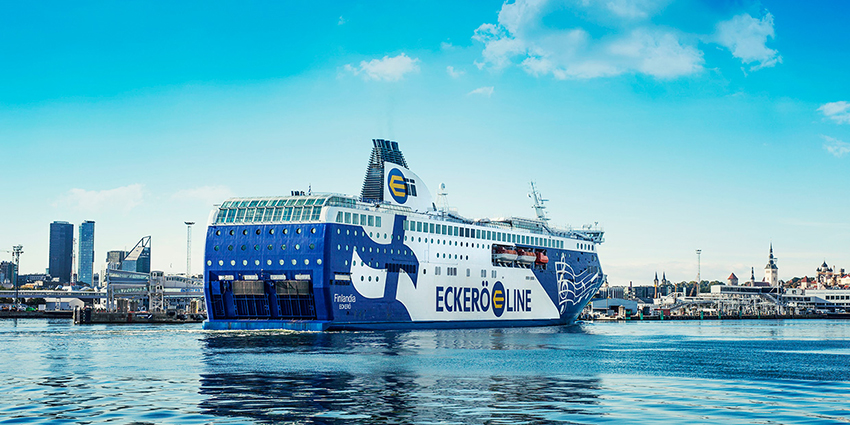
She says that it is difficult to estimate the impact that Russia’s war of aggression will have on passenger numbers. The number of Ukrainian passengers is, for example, significantly higher than before the war.
Increased living costs do not seem to have reduced tourism now that people are able to travel abroad.
“Hard times have traditionally increased domestic tourism and travel in nearby markets. We still believe in Estonia’s appeal,” says Keronen.
“The price level in both Finland and Estonia has risen due to inflation, but there are still price benefits for Finns. Travel from Estonia to Finland is also almost back to what it was”.
Finnlines’ passenger traffic has recovered quickly
Finnlines’s passenger business has recovered quickly. As the shipping company primarily transports cargo with passengers as an extra, its ships were operating normally throughout the pandemic. The first quarter of this year alone will exceed pandemic-era passenger figures by 20 per cent.
“There are also favourable trends to be seen in summer bookings. We’re currently almost ten per cent ahead of where we were at the same time last year,” says Marco Palmu, Head of Passenger Services.
“We’ve already reached 2019 figures on the route between Helsinki and Travemünde in Germany, and expect to exceed them this year.”
Germans are Finnlines’ largest passenger group.
“Germans have mainly visited Finland in the summer, but are increasingly making shorter, two-day visits during the winter as well,” says Palmu.
Since pandemic restrictions were lifted, Finns have also been making more trips to Germany and, from there, to the rest of Continental Europe.
Finnlines’ three passenger-cargo ships operate daily between Helsinki and Travemünde. The boat trip across the Baltic Sea lasts just over a day, but saves motorists up to a thousand kilometres of driving. Finnlines also operates from Naantali to Kapellskär in Sweden via the Åland Islands. Thanks to two new Superstar-class ships, the passenger capacity of this route will increase from five hundred to over a thousand passengers in the autumn.
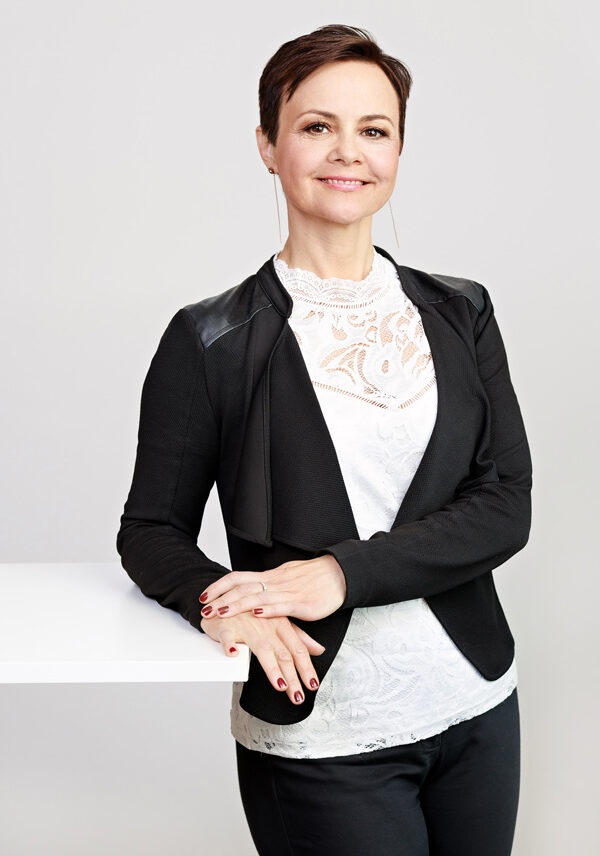
Variety is the spice of working life
Janeka Rauva took up her new position as Tallink Silja’s COO and Deputy CEO in January 2023. She has been working for the company for almost ten years, and has been able to make an impact in many different roles.
“I started out as CFO in August 2013. Back then, we lived in a time when automation and data utilisation were still a distant dream,” says Rauva.
“My team and I were able to rebuild all of our financial processes both on land and at sea. We made a digital leap in the finance department by automating a large number of processes, which improved both our employee and customer experience.”
In 2017–2018, Rauva also spent nine months as Tallink’s Acting HR Director. In summer 2018, she received new responsibilities: in addition to finances, she was put in charge of all five of the company’s passenger terminals in Finland and the development of their digital functions.
“Now I’m once again facing something new, and I’m very excited about it.”



